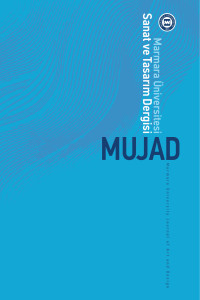ENFORMASYON ÇAĞI SANATINDA KRONOTOPOS: ZİHNİN TASARLANMASI OLARAK YAZILIM
21. yüzyıl enformasyon çağı sanatında yapıtın tasarlanmasında ve mekânsallaştırılmasında etkin araç dildir. Yapıt ise nesnesini aşan yapısıyla, çoğu zaman izleyicinin kendisine dönüşmektedir. Yapıtın dili, -yazılımın donanıma belirlenen yönde çalışabilmesini sağlayan bir zemin oluşturması gibi- izleyicinin algısını ve zihnini biçimlendirirken, izleyiciyi pasif bir alımlayıcı olmaktan çıkararak, aktif bir yapıta, katılımcıya dönüştürür; diğer taraftan da yapıtı ve izleyiciyi kurar, kurgular. Yapıtın eşzamanlı parçası haline gelen izleyici, bulunduğu koordinatlar içerisinde bir zamanda, bir mikro mekân olarak, kendisini dönüştüren yapıtın [yazılımın] da bir parçası olur. Reel dünya, tarih ve coğrafyanın sızabildiği kronotop olarak yapıt, zamansallığını ve zihnini dille kurarken, böylelikle dinamik ve değişken fragmanlar halindeki katmanlı ve anlık bütünlüğünü de izleyicisiyle mümkün kılar. Tüm bu güncel argümanlar, yapıtı kuran bağlam, düşünce ve algı oluşum süreçlerinin izlenmesi sonucunda ve yeni medyumlar vasıtasıyla, 20. yüzyılla birlikte sanatının ifade biçimlerini derinden değiştirmiştir. Bu değişim “IT”, “yazılım mühendisliği” gibi pozitivist uzmanlık alanlarını sanata yakınlaştırmış, sanatın araçlarını ve alanını sanal ve reel bütünlükte genişletmiştir.
Anahtar Kelimeler:
Kronotopos, mekân, dil, zihin, tasarım.
-
Language or software are the efficient tools for designing and spatializing the structure in the art of 21st century information age. Composition, with its structure of overcoming its object, often converts into the audience itself. The language of the composition, in other words the software; forms the perception and mind of the audience, while removing the audience from being a passive receptive, transforms to an active composition, a participant. As the audience becomes a concurrent part of the composition, it also becomes a part of the transforming composition [software] as a micro space in its existing coordinates. Composition as chronotopes, where real world, history and geography transpires; establishes the temporality and mind with software (language), while enabling the layered and transient integrity with dynamic and variable fragments, along with the audience. With the 20th century all these current arguments have deeply transformed the expression of art, as a result of context, notion and perception which establish the composition and with new mediums. This change has affiliated the positivist specialty fields like IT and software engineering with art; extending the tools and space of art with virtual and real integrity.
Keywords:
Chronotopes, spatial, language, mind, design.,
___
- • Housefield, James; 2002, Marcel Duchamp’s art and the geography of modern Paris; Geo graphical Review, American Geographical Society, Vol. 92, no: 4, Oct.
- • Burnham, Judith Benjamin; 1971, Software, Information Technology: Its New Meaning for Art, New York: The Jewish Museum
- Yayın Aralığı: Yılda 2 Sayı
- Başlangıç: 2023
- Yayıncı: Marmara Üniversitesi
Sayıdaki Diğer Makaleler
GÖRME ALIŞKANLIKLARINI SORGULAMAK
SERBEST CAM TASARIMI VE ENDÜSTRİYEL CAM TASARIMI EĞİTİMİNDE SICAK CAM ATÖLYESİNİN ÖNEMİ
ENFORMASYON ÇAĞI SANATINDA KRONOTOPOS: ZİHNİN TASARLANMASI OLARAK YAZILIM
BİLİNÇDIŞININ VE SANATIN SONUNA DAİR BİR ANLATININ ELEŞTİRİSİ
EKOLOJİK BEBEK GİYSİLERİNDE DOĞAL LİFLERİN ÖNEMİ
